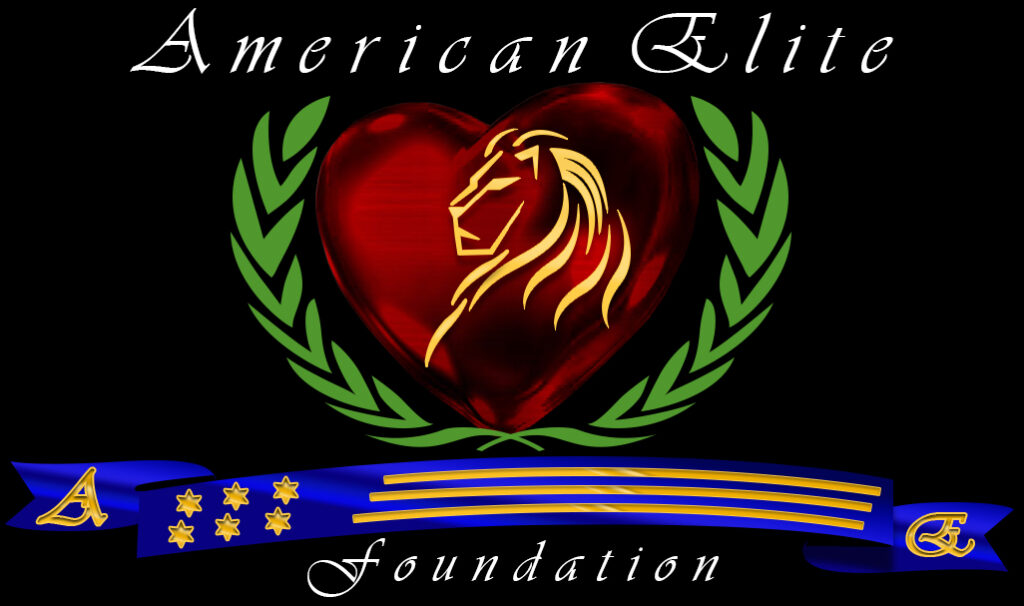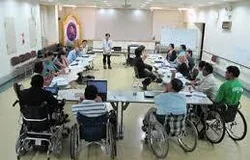Daniel Davidson, MD, MBA, DBA, PHD
Introduction:
The reaction from charitable organizations frequently acts as a ray of hope among the chaos during disasters, when communities are devastated by natural disasters or suffer unanticipated tragedies. In addition to long-term recovery, these groups are essential to rebuilding efforts and giving urgent help. The important role charitable foundations play in disaster assistance is examined in this article, as is the way in which their initiatives foster compassion, support, and fortitude in impacted areas.
Responding to Immediate Needs
In the context of disaster relief, meeting immediate needs entails giving people affected by an emergency or disaster rapid help. This stage usually starts right after a crisis has begun and concentrates on taking care of the most urgent need to protect the lives of people affected. This is an outline of what it comprises:
Evaluation of Urgent Needs:
Charity foundations act swiftly to evaluate the circumstances and determine the impacted population’s most pressing needs. Basic needs including food, water, housing, healthcare, and clothes may fall under this category.
Emergency Response Team Deployment:
Trained emergency response teams are sent by charitable foundations to the impacted areas after they have evaluated the situation. These teams, which frequently collaborate with local law enforcement and other relief organizations, are prepared to offer survivors immediate assistance and support.
Distribution of Emergency Supplies:
To provide emergency supplies to individuals in need, charitable foundations organize logistics and resources. This could entail putting up distribution hubs, planning relief marches, and sending aid supplies straight to the areas that are impacted.
Creation of Temporary Shelter:
To give displaced people and their families a safe haven when houses and infrastructure are damaged or left untenable, charitable institutions may establish emergency evacuation centers or temporary shelters.
First aid and medical support:
Attending to urgent needs requires providing both first aid and medical treatment. Medical teams are dispatched by charitable foundations to repair injuries, offer basic healthcare services, and attend to survivors’ urgent medical needs.
Psychosocial Support:
Charitable foundations understand that calamities have a psychological toll in addition to physical ones. They provide mental health treatments, counseling, and emotional support to survivors who could be going through trauma, bereavement, or sadness.
Search and Rescue:
Charity foundations may take part in search and rescue efforts to find and rescue survivors who are buried under rubble or in locations that are inaccessible in the event that someone is lost or trapped as a consequence of the disaster.
Coordination with Government Agencies and Stakeholders:
In order to efficiently coordinate their response activities, charity foundations maintain close links with government agencies, local authorities, and other stakeholders. Through cooperation, the immediate needs of communities affected by disasters are met in a coordinated and effective manner.
Long-Term Recovery and Rebuilding Efforts
In the context of disaster relief, “long-term recovery and rebuilding efforts” refers to the persistent initiatives made by charitable foundations and other stakeholders to assist impacted communities in their long-term efforts to rebuild their infrastructure and way of life after a disaster.
Evaluation and Planning:
Following the initial emergency response stage, charitable organizations carry out in-depth evaluations of the harm brought about by the calamity. Assessing the degree of damage to houses, infrastructure, means of subsistence, and vital services is part of this. Comprehensive recovery plans are created based on these assessments, taking into consideration the particular requirements and objectives of the impacted areas.
Infrastructure Development and Reconstruction:
One of the main goals of long-term recovery initiatives is repairing damaged infrastructure, such as buildings for houses, businesses, schools, and hospitals, as well as roads, bridges, and utilities. Charity foundations provide funding and oversee building projects to rebuild infrastructure and services that are necessary for the community’s health and well-being.
Support for Livelihoods and Economic Recovery:
Often, disasters cause economic disruptions that result in joblessness and financial hardship for the affected populations. In order to assist people and businesses in rebuilding their livelihoods and regaining financial stability, charitable foundations offer livelihood programs, vocational training, small business grants, and microfinance projects.
Psychosocial Support and Community Resilience:
Trauma, stress, and emotional discomfort are among the many negative effects that disasters have on survivors’ mental health and well-being. Charity foundations assist individuals and communities in overcoming the psychological effects of disasters by providing psychosocial support services, counseling, and mental health programs.
Through promoting social cohesiveness, support systems, and community-led activities for recovery and healing, they aim to increase community resilience.
Disaster Risk Reduction and Preparedness:
Investing in disaster risk reduction strategies and boosting community readiness for upcoming disasters are also important components of long-term recovery initiatives. In order to lower the risk of future disasters and lessen their effects, charitable foundations fund projects including developing resilient infrastructure, putting early warning systems in place, running training and capacity-building programs, and encouraging sustainable land-use practices.
Government and Stakeholder Engagement:
Throughout the long-term rehabilitation process, charitable foundations work closely with government agencies, local authorities, non-governmental organizations, community-based groups, and other stakeholders. They support investments and policies that put the needs of communities affected by disasters first, encourage cooperation and coordination among stakeholders, and guarantee open and accountable decision-making procedures.
Mobilizing Financial Support and Resources
“Mobilizing financial support and resources” is the term used to describe the proactive process of obtaining money, gifts, and other resources required to assist with disaster relief efforts. In order to raise money from a variety of sources, including people, businesses, governments, and other organizations, charity foundations make significant use of their networks, power, and experience.
The following summarizes the methods that charitable foundations use to raise money and resources:
Campaigns for Fundraising:
To solicit contributions from the general public, charitable foundations frequently start fundraising campaigns. Direct mail, telethons, social media campaigns, internet fundraising platforms, and unique events are a few possible avenues for these initiatives. These campaigns urge people and organizations to support the relief efforts by emphasizing the gravity of the situation and the positive effects of donations.
Corporate Partnerships:
To get cash, in-kind contributions, and other resources, charitable foundations collaborate with corporations and businesses. Corporate partners can support disaster relief efforts by contributing money, donating products and services, or setting up volunteer programs for their staff. Through the accomplishment of corporate social responsibility goals and a significant impact on impacted communities, these collaborations are advantageous to both sides.
Government Contracts and Grants:
To assist in their disaster relief operations, charitable foundations are eligible to apply for government contracts, grants, and subsidies. Funds are frequently set aside by local, national, and international governments for initiatives aimed at responding to and recovering from disasters. Funding may be provided to charitable foundations that have demonstrated a successful track record of providing disaster relief in order to augment their resources and improve their ability to aid impacted communities.
Donor Engagement and Stewardship:
In order to foster connections and obtain continuous financial support, charitable foundations interact with donors, supporters, and benefactors. They thank contributors for their generosity, give updates on the impact of donations, and are open and honest about their aid efforts. Charity foundations foster trust and sustain support for their goal by establishing robust donor relationships and exhibiting transparency and accountability.
Grant Funding and Philanthropic Support:
Trusts, foundations, and philanthropic organizations that promote humanitarian objectives may provide grants to charity foundations. These grants offer monetary assistance for particular projects, plans, or programs designed to meet the short- and long-term needs of communities devastated by natural disasters. Charity foundations approach grant-making organizations with grant proposals that describe their goals, plans, and anticipated results in an effort to obtain financing.
International Aid and Relief Organizations:
In order to obtain more funding and resources for disaster relief activities, charity foundations work with international aid and relief organizations. Through these collaborations, charitable organizations can increase their ability to respond to major catastrophes and disasters by gaining access to international networks, knowledge, and financial sources.
Providing Expertise and Technical Assistance
When discussing charitable foundations’ role in disaster relief, the phrase “Providing Expertise and Technical Assistance” refers to their capacity to provide specific resources, expertise, and abilities to meet the many problems involved in both responding to and recovering from disasters. Below is a more thorough explanation:
Specialized Knowledge:
Expertise in crisis management, public health, engineering, humanitarian help, and other related subjects is frequently employed by charity foundations. These professionals are well knowledgeable in disaster response procedures, best practices, and techniques. Their interventions can be customized to meet the specific needs and vulnerabilities of populations affected by disasters.
Technical Skills:
Charity foundations may possess the technical skills and resources necessary for efficient disaster relief efforts in addition to their specialized knowledge. Equipment for providing clean water, building shelters, conducting search and rescue missions, and providing emergency medical care are a few examples of this. The provision of essential services and support to communities affected by disasters is made possible by these technological resources for charitable foundations.
Deployment of Skilled Workers:
In disaster-affected areas, charitable foundations send out teams of trained workers, including doctors, engineers, social workers, crisis response specialists, and logistics specialists. These specialists have the training necessary to identify needs, plan relief activities, and offer survivors focused support. The knowledge and skills they possess enable charitable organizations to carry out quick and lasting solutions that meet the requirements of impacted communities.
Planning and Needs Assessment:
Charitable foundations carry out in-depth evaluations of the effects of calamities on communities, taking into account the destruction of vital infrastructure, the loss of life and means of subsistence, and other humanitarian requirements. They create thorough plans for relief and recovery operations based on these assessments, taking into account local context, cultural concerns, and resource availability, among other things. Their technical proficiency permits them to devise tactics that optimize the effects of their interventions and guarantee the effective distribution of resources.
Building Capacity and Training:
To increase communities’ resilience to calamities in the future, charitable foundations may also take part in programs aimed at building capacity and providing training. They offer training programs on risk reduction strategies, disaster preparedness, first aid, and other pertinent subjects to enable people and communities to react to crises in a timely and efficient manner. Charity foundations help to create a more resilient society that can lessen the effects of disasters by providing local stakeholders with the skills and information they need.
Fostering Collaboration and Partnerships
The process of bringing together various stakeholders, such as government agencies, non-governmental organizations (NGOs), community groups, and private sector entities, to jointly respond to and address the needs of communities affected by disasters is known as “fostering collaboration and partnerships” in the context of charity foundations’ involvement in disaster relief.
Creating Alliances:
Charitable foundations actively look for chances to work with other groups and companies that are engaged in providing aid for natural disasters. They form partnerships on the basis of common objectives, complementary skill sets, and a desire to assist impacted communities.
Facilitating Coordination:
Among the many parties involved in disaster response and recovery, charity foundations are essential in fostering coordination. They perform the roles of coordinators, conveners, and middlemen, facilitating information sharing, streamlining communication, and coordinating activities to optimize effectiveness and efficiency.
Combining Resources:
Working together enables charitable foundations to combine material, human, and financial resources to increase the overall effect of their relief operations. They can address a greater range of needs and reach more individuals in need of support by utilizing each other’s strengths and capacities.
Sharing Knowledge:
Charity foundations frequently have technical know-how and specialized skills in community development, disaster relief, and catastrophe management. By working together and forming partnerships, they impart their knowledge to other relevant parties, offering insightful opinions, direction, and assistance to improve the caliber and efficacy of relief operations.
Encouraging Innovation:
Working together creates a creative and innovative atmosphere where many stakeholders may share ideas, try out novel strategies, and come up with creative answers to challenging problems in disaster relief. Together, charitable foundations and their partners may find weaknesses in current systems and create creative solutions to close such gaps.
Strengthening Sustainability:
Collaborations formed during relief operations for natural disasters can go beyond the initial phase of response and support long-term resilience and sustainability in areas vulnerable to future disasters. Charity foundations and their partners can provide the foundation for sustained support, capacity-building, and community empowerment following disasters by cultivating teamwork and forming strong partnerships.
Inspiring Hope and Resilience
“Inspiring Hope and Resilience” captures the subtle but significant influence that charitable foundations have on communities affected by natural disasters. Here’s a more thorough investigation:
Emotional Support:
Following a calamity, survivors frequently go through a range of emotions, such as fear, grief, and uncertainty. Charity foundations offer their presence, empathy, and compassion as means of offering emotional support. Reminding survivors that they are not alone in their challenges and that there are groups devoted to their support might give them a sense of hope and comfort.
Symbol of Solidarity:
Charitable foundations are a sign that individuals from all walks of life are concerned about each other’s welfare and are prepared to provide a hand when necessary. Communities afflicted by disasters might feel more united and uplifted by this solidarity, which can strengthen their resolve to face hardship together.
Tales of Resilience:
Narratives of Resilience are frequently disseminated by charitable foundations, showcasing the accomplishments of people and groups that have skillfully overcome difficult situations and restored their lives following a calamity. These narratives are potent illustrations of human tenacity and fortitude, encouraging others to have faith in their own capacity to surmount challenges and turn around their lives.
Empowerment Through Assistance:
Charitable foundations enable victims of disasters to take charge of their own recuperation by offering them tools and practical support. These types of support, which include access to food, clean water, housing, and employment opportunities, provide survivors with the means to reconstruct their lives with dignity and resiliency.
Creating Community Networks:
Charity foundations assist in enhancing social networks and links among communities affected by disasters by their relief and recovery operations. They add to the fabric of community resilience by encouraging cooperation, mutual aid, and a sense of belonging, which makes it possible for people and groups to come together in times of need and assist one another through trying times.
Conclusion:
In order to mobilize support, provide vital aid, and build resilience in impacted communities, charity foundations are vital to disaster relief efforts. In times of disaster, their knowledge and resources, along with their dedication to humanitarian ideals, allow them to have a major and long-lasting influence. Charity foundations play a crucial role in disaster relief, providing hope and support to those in need as the threat of natural disasters and other calamities continues to grow.








